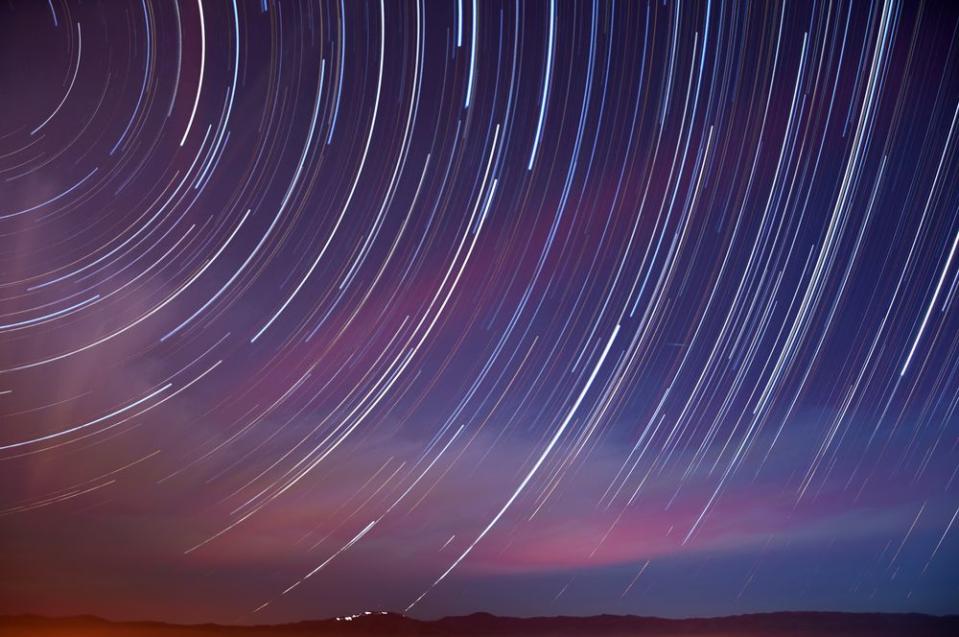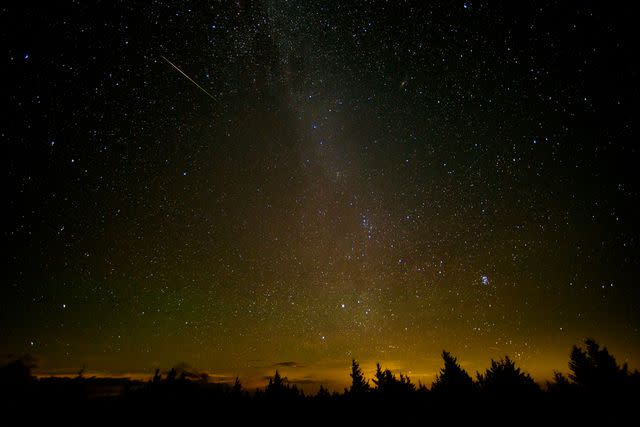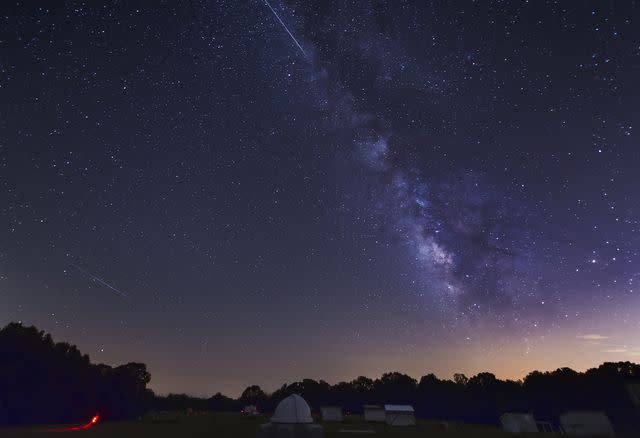All About the Quadrantid Meteor Shower, Including When It Peaks and How to Watch It
The Quadrantids have the potential to be the 'strongest meteor shower of the year,' according to the American Meteor Society

Fireworks won't be the only things lighting up the night sky in the new year!
That's because the Quadrantids are predicted to peak at the beginning of January, marking the first meteor shower of 2024.
Skywatchers in the northern hemisphere are in for a real treat since the radiant of this shower is situated very far north in the sky. This means, there's potential for approximately 100 meteors per hour to shoot at its peak.
However, like all meteor showers, viewing a celestial spectacle of that capacity is only possible under perfect conditions. For example, the moon is one factor that often hinders star spotting due to its illuminated glow.
But have no fear in the early new year, stargazers! January's full moon doesn't rise until the end of the month; therefore, the lunar display will be in its new phase at the time of the Quadrantids' expected peak.
Read on for a comprehensive guide to 2024's Quadrantid meteor shower, including when and how to watch them in the sky.
Related: All About January's New Moon and What It Means for Your Zodiac Sign
When does the Quadrantid meteor shower peak?
![(Photo: Mike Lewinski [CC BY 2.0]/Flickr) A Quadrantid meteor lights up the sky above New Mexico.](https://s.yimg.com/ny/api/res/1.2/xabAqkoGogcK5pn.ioHUBQ--/YXBwaWQ9aGlnaGxhbmRlcjt3PTk2MDtoPTYwNQ--/https://media.zenfs.com/en/people_218/3c4d01b82b880f4efe374ad7576692dd)
The 2024 Quadrantid meteor shower is predicted to peak late night on Jan. 3 into early morning on Jan. 4 between the hours of 1:00 a.m. and 5:00 a.m. local time. According to the American Meteor Society (AMS), the Quadrantids "have the potential to be the strongest shower of the year."
While your chances of spotting a shooting star are increased at that time, other opportunities to catch a glimpse of the spectacle are possible since the Quadrantids remain active through mid-January (around Jan. 16) each year.
Related: All About the 2023 Ursid Meteor Shower, Including When It Peaks and How to Watch It
How to view the Quadrantid meteor shower?

While the AMS points out that the Quadrantids has the potential to be the "strongest meteor shower of the year," the organization notes it "usually falls short due to the short length of maximum activity (6 hours) and the poor weather experienced during early January."
Like all meteors, the chances of spotting one in the night sky depend on several factors. Light pollution, along with clouds and fog, are a few of the biggest obstacles that often hinder stargazers' view of spotting a shooting star.
The moon is another factor to consider when trying to watch a meteor shower, as its illuminated glow can act as light pollution. This isn't always the case, however, as it depends on the moon's phase the night of the shower.
The expected peak of this year's Quadrantids coincides with a quarter moon, meaning Earthlings will see the moon half-lit following December's full moon (nicknamed the Cold Moon) on Jan. 3, 2024.
Under a dark sky with no moon, the Quadrantids can produce over 100 meteors per hour. If you miss the peak, try pointing your eyes to the sky during the new moon on Jan. 11. That's when the moon will give off a blacked-out appearance since it won't be illuminated by the Sun.
Since the moon's glow is out of your control, there are other viewing tips to take into consideration when trying to spot a meteor. Eliminating as much light pollution as possible is best, so situate yourself in a dark location away from city lights.
Depending on where you watch from in the world, be sure to dress appropriately if you plan to spend a long time outside. (Remember, the Quadrantids are active around the Winter Solstice, so chances are it's going to be cold!)
Where does the Quadrantid meteor shower appear in the sky?

Meteors are the product of leftover comet particles and bits from asteroids. When these objects come close to the sun, they leave a dusty trail in their wake. Every year, these particles collide with Earth's atmosphere as they pass through, then disintegrate to form colorful streaks in the sky.
While comets are the true point of origin for meteor showers, for the casual viewer the meteor appears to originate from the "radiant," or the point in the sky from which the stars appear to shoot. However, the Quadrantids' radiant no longer exists!
In fact, it derives (and got its name) from a now-obsolete constellation known as the Quadrans Muralis ("Mural Quadrant"), according to EarthSky. Instead, viewers in the Northern Hemisphere can point their eyes towards the famed Big Dipper, similar to the Ursids' radiant.
However, according to NASA's Bill Cooke, that's not the only place you want to look in the sky. "Meteors close to the radiant have very short trails and are easily missed, so observers should avoid looking at that constellation," he said.
(Pro tip: Lie down on the ground, adjust your eyes to the dark sky and simply take in its vastness to better your chances of spotting a star!)
Related: All About December's Full Moon and What It Means for Your Zodiac Sign
What meteor shower comes after the Quadrantids?
The Quadrantids are the last meteor showers active for quite a few months. The next meteor shower is the Lyrids, which will become active on April 15, 2024.
For more People news, make sure to sign up for our newsletter!
Read the original article on People.

